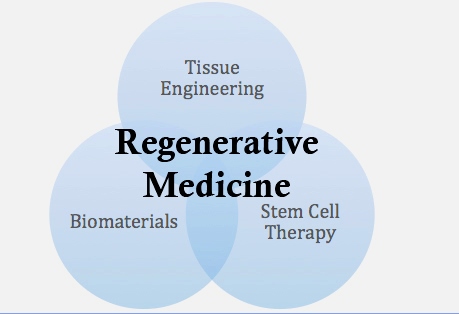Research News: Advancing Tissue Engineering with Shape Memory Hydrogels
March 14, 2024
Researchers demonstrate a hydrogel system possessing the ability to remember its shape, offering a unique platform for controlling cell adhesion behavior
Artificial scaffolds play an important role in tissue healing and growth. The properties of a scaffold, especially its elasticity, impact cell growth. However, adjusting the elasticity without altering composition and other properties has been challenging. Now, researchers at Doshisha University have successfully created a hydrogel with a tunable elastic modulus with the same composition. This breakthrough allows, for the first time, the control of cell adhesion on a hydrogel by adjusting the elastic modulus.
One of the primary goals in the field of tissue engineering and regenerative medicine is the development of artificial scaffolds that can serve as substitutes for damaged tissue. These materials must ideally resemble natural tissue and must have the ability to support cell adhesion, proliferation, and differentiation. When considering scaffold materials, researchers account for the scaffold’s properties, such as its surface roughness, its water content (hydration state), and its flexibility or stiffness (elastic modulus), since these properties are known to affect cell growth.
Hydrogels are biocompatible cross-linked polymers with high water content and are a promising scaffolding material for soft tissue. They can be designed with different elasticities, which can match the mechanical properties of various natural tissues. However, their elastic modulus is linked to their composition, resulting in a difference in the characteristics between softer and harder hydrogels.
To study the specific effect of the hydrogel’s elasticity on cell growth, a research team led by Assistant Professor Shin-nosuke Nishimura and Professor Tomoyuki Koga from Doshisha University, Japan, has developed a hydrogel with tunable elastic moduli using the same polymers. The findings of their study were published in the journal Advanced Materials Technologies on February 9, 2024.
“The elastic modulus of hydrogels is one of the most crucial factors in controlling the fate of cells,” explains Dr. Nishimura. However, hydrogels with different elasticities are usually prepared by changing the base monomer and the crosslinking agent. This affects not only the elasticity but also various characteristics, such as hydrophilicity and hydrophobicity.
To avoid this problem, the researchers designed the hydrogel without any crosslinks. They used poly(N-acryloylglycinamide) (PNAGAm) as the base polymer, a vinyl polymer with side chains that form strong hydrogen bonds. These bonds break at high temperatures and reattach at lower temperatures, giving these polymers the unique capability to remember and recover their shape in response to temperature changes.
To improve cell adhesion properties of the hydrogel, the researchers combined the PNAGAm polymer with arginine (R)–glycine (G)–aspartic acid (D)–serine (S) peptide through radical copolymerization. These peptides represent the cell-binding sites found in the body and make the hydrogel suitable for cell growth.
Unlike conventional hydrogels, the elastic modulus of the proposed hydrogel can be adjusted by compressing it into different thicknesses at high temperatures. When exposed to high temperatures, the hydrogen bonds within the polymer break and compressing the hydrogel under such conditions brings the polymer network and hydrogen-based crosslinks closer together. This change in the molecular structure leads to a modification of the hydrogel’s elastic modulus. Upon cooling, due to the reattachment of the hydrogen bonds, the hydrogel maintains both its shape and elastic modulus.
By using this method, the researchers successfully changed the elastic modulus of a rectangular hydrogel bar. They compressed different sections of the hydrogel to thicknesses of 1 mm, 0.64 mm, and 0.50 mm at 65 °C for an hour. On cooling it to a cell-culturing temperature of 37 °C, the non-pressed, moderately pressed, and firmly pressed regions had elastic moduli of 9460 Pa, 5940 Pa, and 3460 Pa, respectively.
On seeding the hydrogel with mouse embryo fibroblast (NIH/3T3) cells, the researchers observed a direct correlation between the elastic modulus of the hydrogel and the number of adhered cells. In the unpressed region, the number of adhered cells was 1.3 × 104 cells cm−2, whereas in the firmly pressed region, it increased to 1.9 × 104 cells cm−2.
“In this study, we have succeeded in controlling cell adhesion behavior for the first time in the world by utilizing the shape memory properties of hydrogels,” says Prof. Koga.
In conclusion, by altering the elastic modulus while keeping other properties consistent, the researchers created a platform which can be used to investigate the influence of elastic modulus on cell growth. This can lead to improved scaffolding materials for tissue regeneration!

Developing hydrogel scaffolds with tunable elastic modulus for tissue engineering
Researchers have developed a hydrogel composed of poly(N-acryloylglycinamide) (PNAGAm) grafted with arginine (R)–glycine (G)–aspartic acid (D)–serine (S) peptide whose elastic modulus can be changed by simply compressing it to different thicknesses.
Image courtesy: Umargani Jamal Mohamed from Openverse https://openverse.org/image/9b3525c1-d321-40ad-bbf3-49515475ecd5
Image license: CC BY-SA 4.0
Reference
| Title of original paper | Regulation of Cell Adhesion on Physically Crosslinked Hydrogels Composed of Amino Acid-Based Polymers by Changing Elastic Modulus Using Shape Fix/Memory Properties |
| Journal | Advanced Materials Technologies |
| DOI | 10.1002/admt.202301598 |
Funding information
This work was supported by a Grant-in-Aid for Scientific Research (KAKENHI) (JP22K05232 to T.K.) from the Japan Society for the Promotion of Science (JSPS). This research was also supported by Grant-in-Aid for the Japan Prize Foundation (to S.N.), Lotte Research Promotion Grant (to S.N.), and All Doshisha Research Model “SDGs Research Project” (to T.K. and S.N.).
EurekAlert
https://www.eurekalert.org/news-releases/1037326
Profiles

Shin-nosuke Nishimura
Assistant Professor , Faculty of Science and Engineering Department of Molecular Chemistry and Biochemistry
Shin-nosuke Nishimura is an Assistant Professor at the Faculty of Science and Engineering, Department of Molecular Chemistry and Biochemistry at Doshisha University. His research interests lie in the fields of nanotechnology/materials, organic functional materials, polymer chemistry, green/sustainable/environmental chemistry, and bioorganic chemistry. He has published numerous papers and written several books, covering the areas of organic chemistry, biomaterials, hybrid materials, peptide chemistry, and polymer chemistry. Dr. Nishimura is also a member of several scientific societies, such as The Chemical Society of Japan, MRS Japan, The Society of Biomaterials Science, Japan, and The Society of Polymer Science, Japan.

Tomoyuki Koga
Professor , Faculty of Science and Engineering Department of Molecular Chemistry and Biochemistry
Tomoyuki Koga is a professor in the Department of Molecular Chemistry & Biochemistry. He was educated at Doshisha University, where he earned his PhD in engineering in 2001. After working as a postdoctoral fellow at the National Institute of Advanced Industrial Science and Technology (AIST), Nagoya Institute of Technology, and California Institute of Technology, he moved to Doshisha University. Since 2014, he has been at DU as a full professor.
Lab page:
https://polymerchem-lab.doshisha.ac.jp/en/
Media contact
Organization for Research Initiatives & Development
Doshisha University
Kyotanabe, Kyoto 610-0394, JAPAN
CONTACT US
